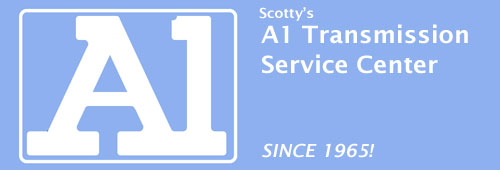Beginning with the Hondamatic transmission and continuing through the many iterations that followed, Honda employs a system that sees is based on individual gears, positioned on parallel axes like a manual transmission. Each individual gear ratio is engaged by a separate hydraulic clutch pack. One of the many advantages of this approach is that it preserves engine braking by deleting a sprag between first gear and second gear.
From the beginning, starting with the N600 series, Honda integrated the transmission and engine block into a single unit. Hondamatic units involved a lockup function, which Honda branded as a third ratio with manual gear selection. Additionally, Honda's early transmissions employed a patented torque converter that used stator force to reduce hydraulic pressure losses by employing a reaction arm that increased the hydraulic pressure at times when the stator was stalled. That reaction arm worked directly on the regulator valve which created increased pressure which was delivered to the clutch plates when torque multiplication was at its maximum.
The Honda stator included a sprag clutch allowing it to freewheel when needed. The N360/N600 controlled gear shifts by balancing both a throttle valve and a centrifugal valve. The resulting "opposing" pressures made the gear changes through the free floating gear change valves.
When the Civic was debuted, it included a manually-changed, hydraulically-engaged dual-speed transmission with a torque converter, which was usually about 7" in size and created a torque ratio of c2.7 to 1.
BUILD PROCESS
Each transmission is built from start to finish as a whole unit independent from all others.
First, the transmission is broken down and cleaned by our teardown department, and then inspected. It then goes into a hot wash and is brought out to be re-inspected by the prep department, which takes the cases to the polishing station for further cleanup.
The valve bodies are placed in an ultra-sonic cleaning station after the builder tears them down and inspects all springs and pistons. All pistons are then hand polished to a mirror finish, thus removing all imperfections, and the valve bodies are washed for a third time.
Each transmission is built from start to finish as a whole unit independent from all others.
First, the transmission is broken down and cleaned by our teardown department, and then inspected. It then goes into a hot wash and is brought out to be re-inspected by the prep department, which takes the cases to the polishing station for further cleanup.
The valve bodies are placed in an ultra-sonic cleaning station after the builder tears them down and inspects all springs and pistons. All pistons are then hand polished to a mirror finish, thus removing all imperfections, and the valve bodies are washed for a third time.


Valve bodies are then re-assembled by the builder who then goes over the notes of both prior inspections. The builder then does his own inspection and goes over the unit with a fine toothed comb. Once satisfied, he builds the unit. If there is a question regarding any quality issues, the builder then would go to the operations manager to correct his findings.
Each transmission goes through four cleaning stages and four inspection stages to insure cleanliness and quality of parts. Our transmissions are built in enclosed rooms to keep the environment as dust and lint free as is possible.
Each transmission goes through four cleaning stages and four inspection stages to insure cleanliness and quality of parts. Our transmissions are built in enclosed rooms to keep the environment as dust and lint free as is possible.
Each transmission is built using the finest OEM hard parts and bearings to insure a unit that will last for many years.
Once the transmission has been completed, the builder then stamps his initials and a serial number on the tranny and all work performed is then documented in his builder notes.
Once the transmission has been completed, the builder then stamps his initials and a serial number on the tranny and all work performed is then documented in his builder notes.











